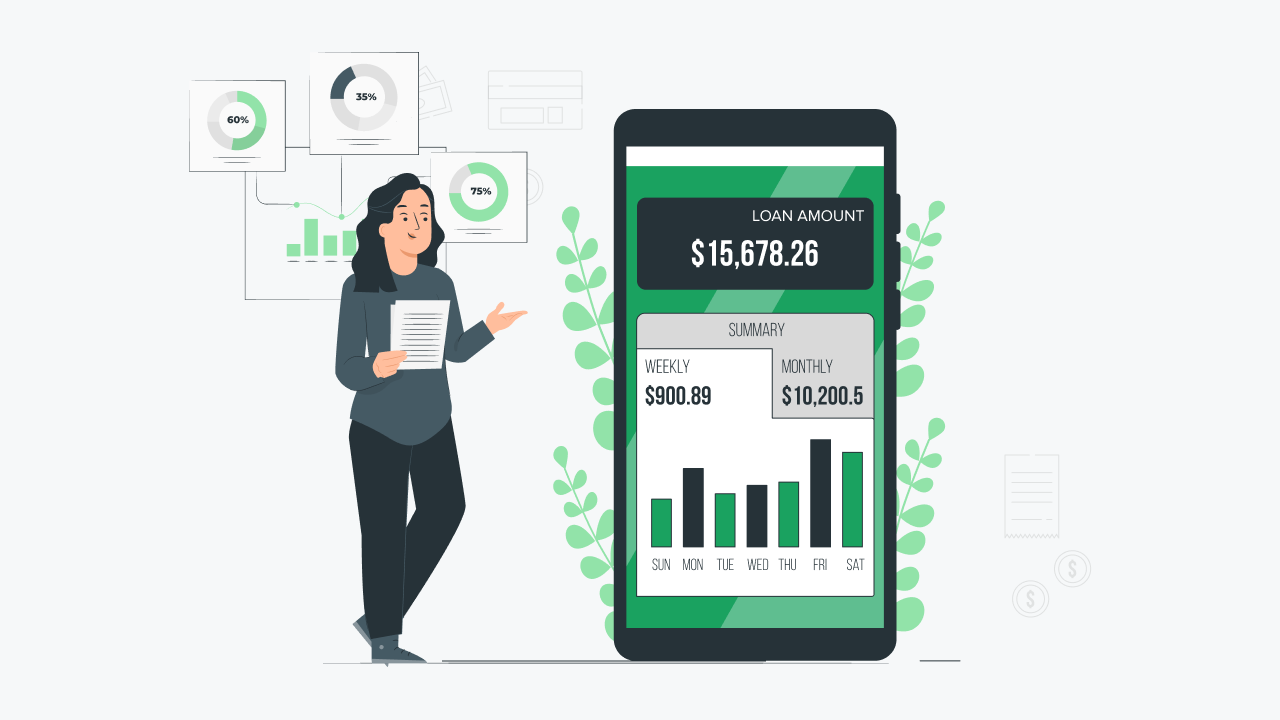In 2022, the FinTech industry will be the diversified and fastest evolving business domain. Everyone has been discussing online banking and blockchain: mobile payments and the most attractive 'loan automation' in the market today. The concept that helps streamline and automate the financial business processes is not a newbie, but many entrepreneurs still need to make concrete decisions.
If you have been thinking about adopting loan automation in your organizations and are still hesitant or looking for more info, keep reading to make a balanced and informed decision on Loan Automation.
Loan Automation for Fintech
The concept of automation is so straightforward to explain. Automated processes need little to no human interventions and reduce the pressure on employees and organizations. Many of us may assume that there will be too many risks and hidden pitfalls when implementing it in the fintech industry. But, there are loads of examples of businesses that are seamless and successful with loan automation solutions.
Let us outline the challenges in traditional lending practices and examine each stage of the credit process to check how automation can improve and standardize the underwriting procedures.
Assessing the credit worthiness of any individual or business is a challenging task. By streamlining and automating the lending process, financial institutions are looking for applications that help them overcome challenges, improve the quality of loan portfolios, and deliver customer satisfaction.
Why are banks still struggling to achieve their objectives?
Many lenders use manual and paper-based loan approval procedures that seem very old in this digitized world. As a result, the decision time will be prolonged and cannot meet the customer expectations, and along with that, the internal data management can be a problem that creates more work for staff and causes opacity for both management and consumers today.
The loans can range in size and complexity. Be it Spreadsheets or word files, they turned the procedures cumbersome. Data and financial entry can be highly time-consuming and may lose uniformity. The data entered into spreadsheets sometimes re-entered directly into lenders' core systems, doubling effort, and duplicate records are the severe flaws associated with the legacy systems.
Every fintechs organization reading this article knows each significant stage and visualizes each step in their organization. Think about the major ones in terms of the number of staff involved, where process bottlenecks come into the light, which steps are most challenging, and how long it takes for a loan application to move between stages.
Customer Management
Automation can mitigate the inconsistency and delays in collecting the financial data and other customer information that is mandatory. The customer-facing web-based portals and APIs can facilitate the digital onboarding of new prospects and existing customer data to the lender's loan platform. Once the data is received, organizations can define the business rules; can automate the next steps in the process. They can even differentiate the loan applications and deploy their decisions quickly.
Have you ever thought about how often do bankers rekey information from CRM to credit application after changes to details? Would it be simpler and less susceptible to error for CRM to integrate seamlessly with loan applications and for data in one system to flow natively into another?
Loan automation platforms enable multiple teams across departments to access the same customer documents. The protocols within the system can be effective, maintaining the integrity of customer information and ensuring access to information.
Credit analysis
Risk assessments are the common step in every loan application processing to make lending decisions. The loan automation platform helps fintechs extract the necessary financial data to analyse the credit risk from the platform based on the documentation. The risk metrics can help the banker assess the overall application in just minutes.
Credit information and decision making
After mining the appropriate data, information and presenting, it is clear to make a credit decision. By automating the lending process from start to end, it captures the benefits of accuracy, real-time data and improves the efficiency and the best thing is it reduces the time to make decisions. The decision to approve or decline the loan has also been made over by the automation business logic.
Monitoring Covenants
After the process is done, the asset itself must be managed and monitored the risk quarterly, annually and even monthly basis. The challenge in this step is streamlining the collection of financial data to satisfy the covenants and policy exceptions. Racking in such cases can be risky and inefficient if done manually. An automated covenant or tickler concept helps in a smooth process and go on time with in-built alerts.
Conclusion
The lending landscape is changing, spurred by the emergence of more technology-enabled competition and better cloud-integrated platforms. Automation has increased the efficiency of various lending platforms. Lenders need to recognise the importance of automating their process in terms of cost-efficiency, time-saving, better data integrity, and a powerful analytical tool. While automation can pose some challenges initially, doing so in a phased manner can enhance the institution’s brand value.
If you are seriously looking for the best loan automation platform for your organisation, register here and connect with the Quickwork team.








